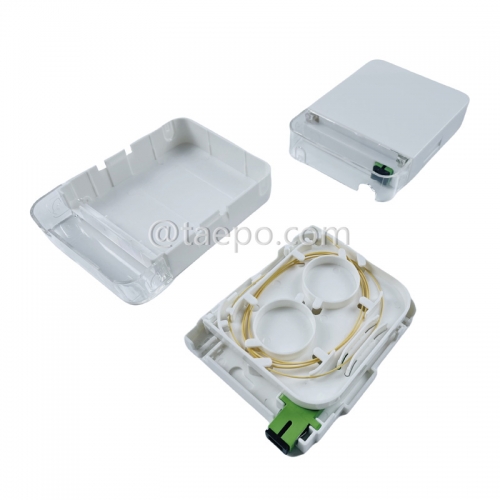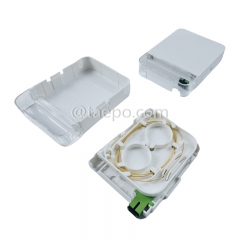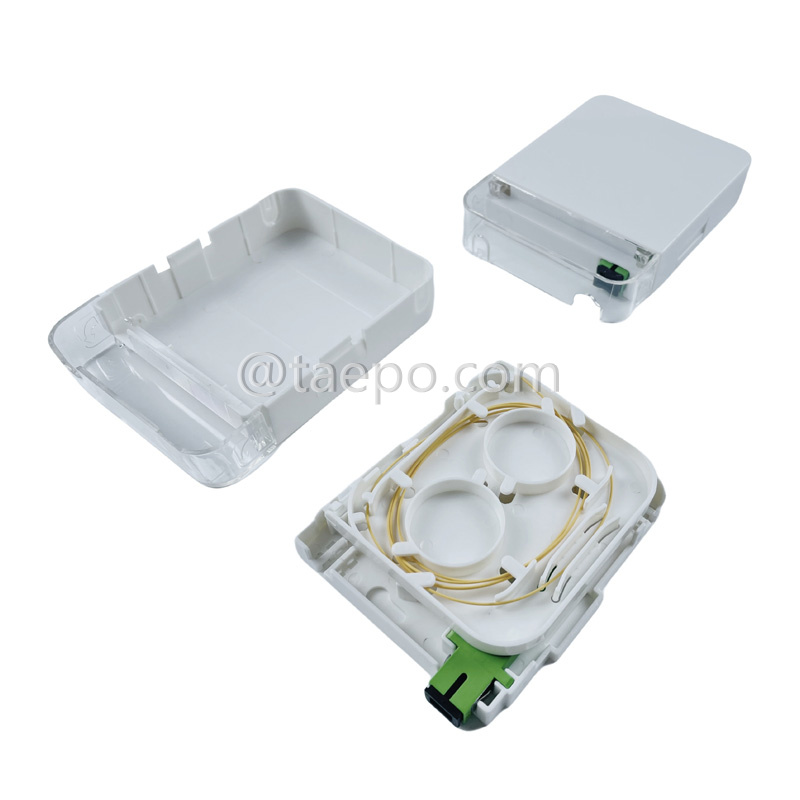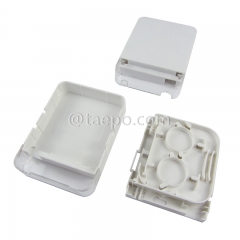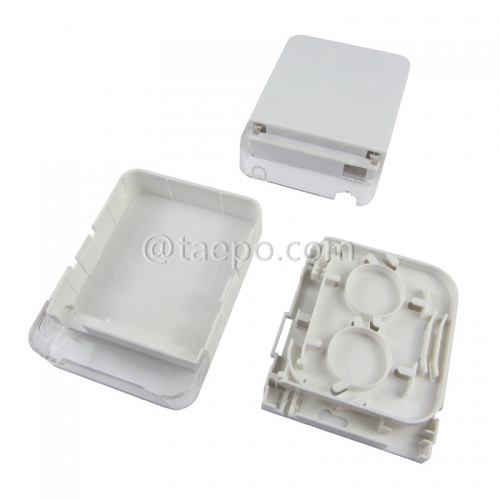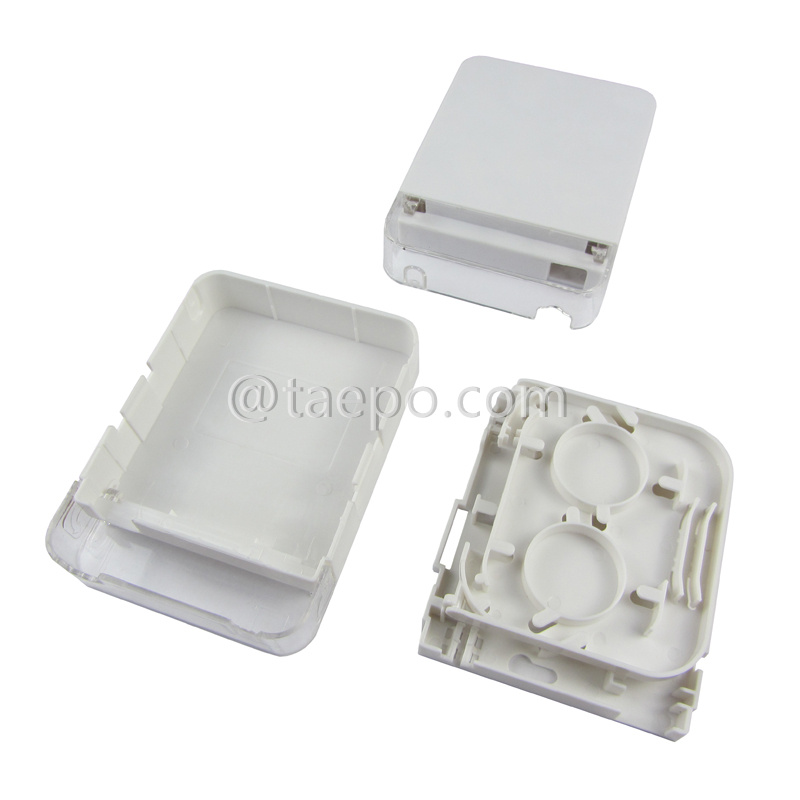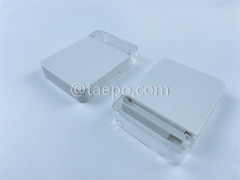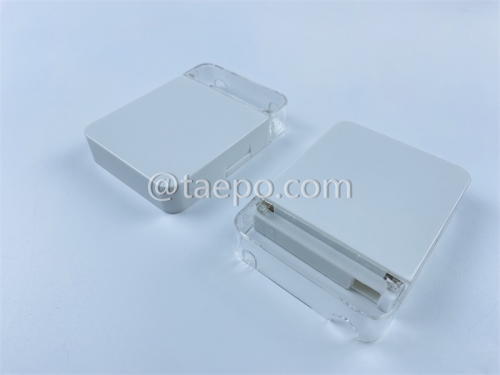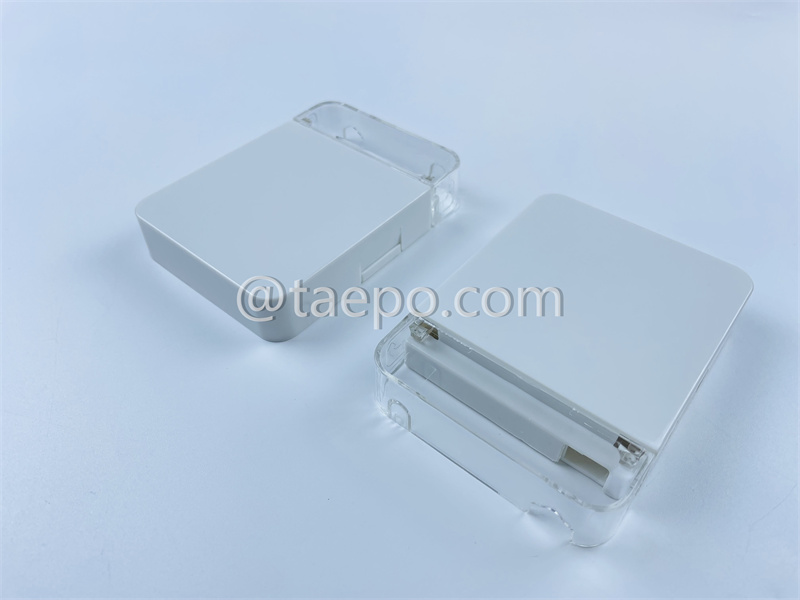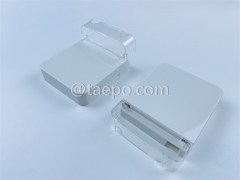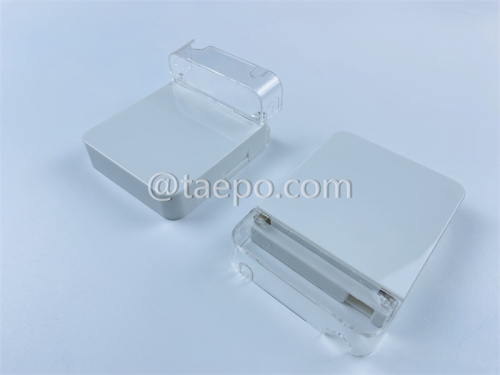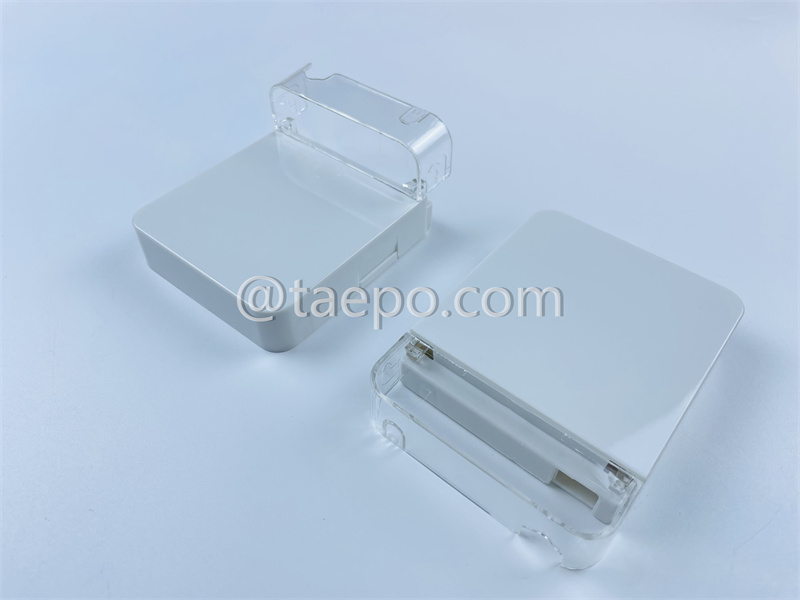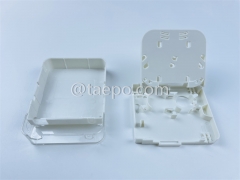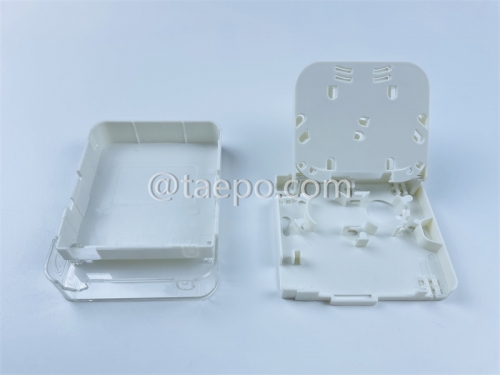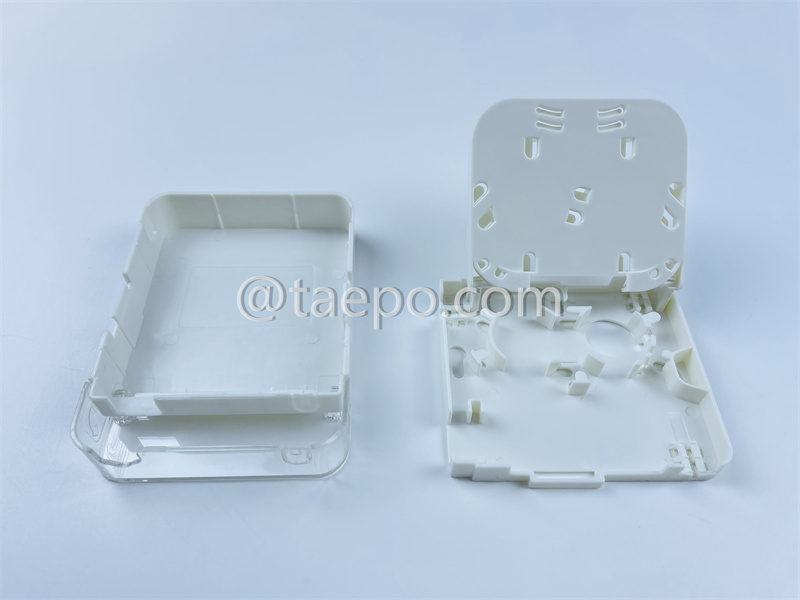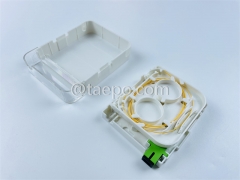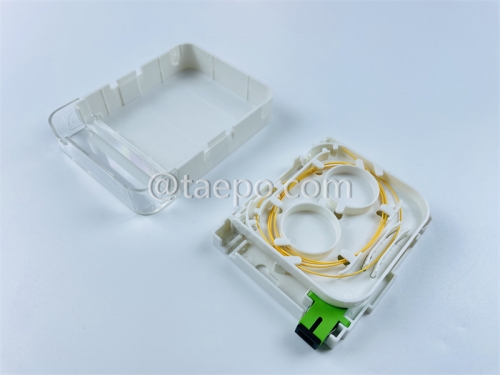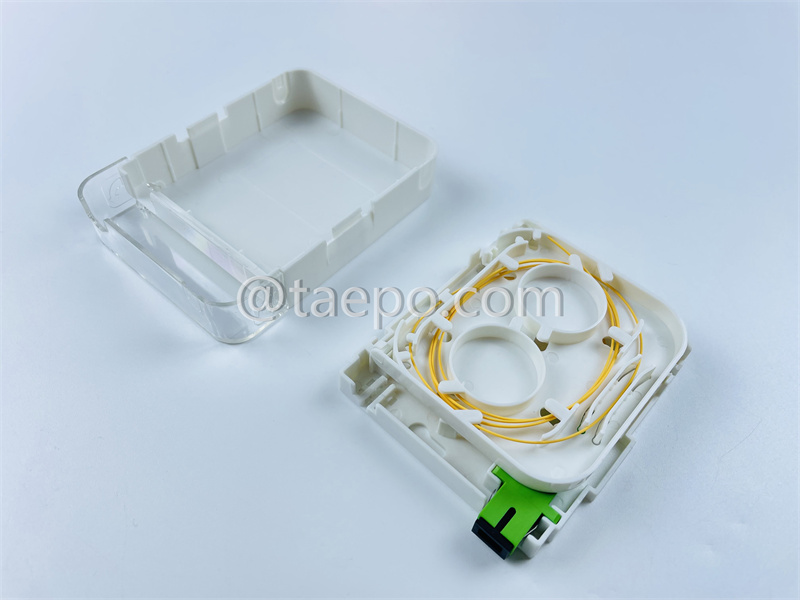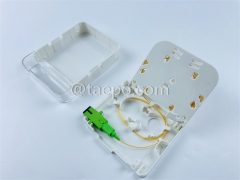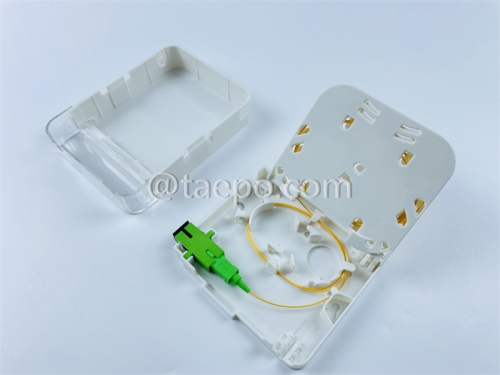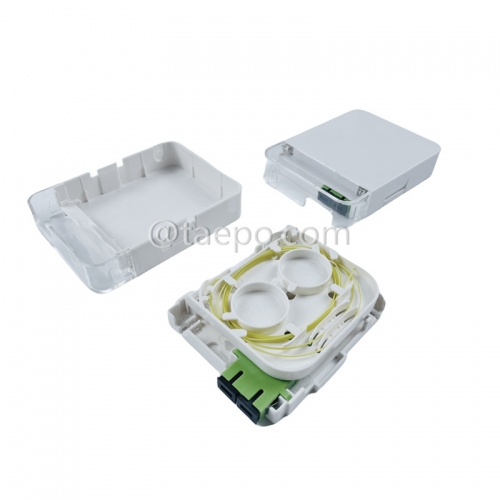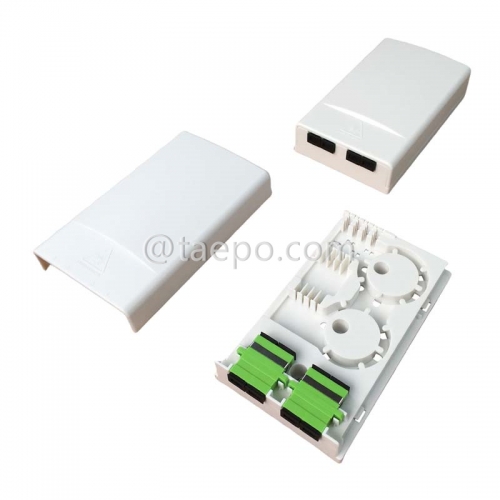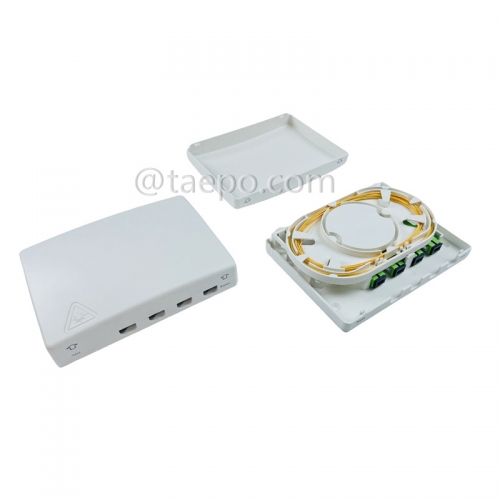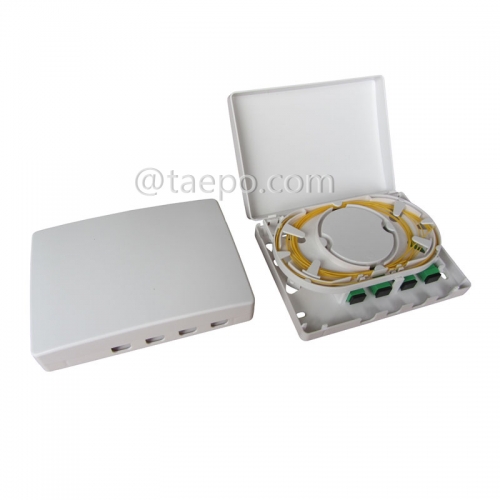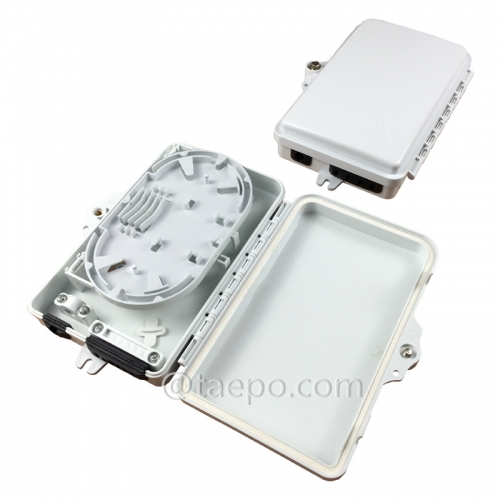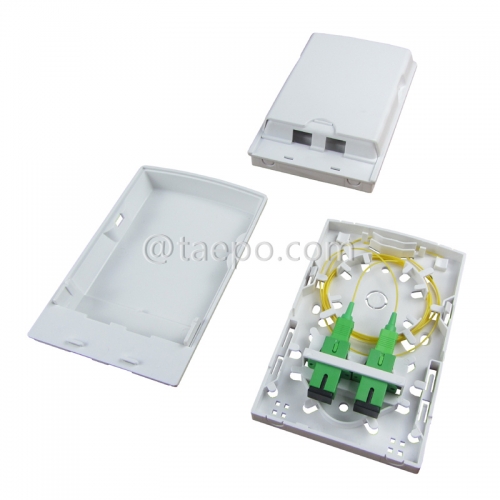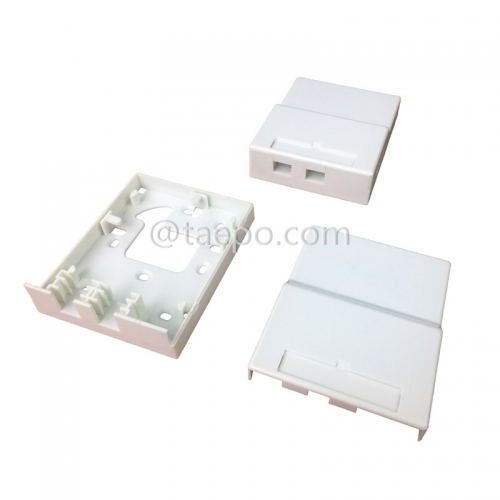TAEPO - Your Professional Fiber Optic Termination Box Manufacturer in China !
Descriptions
Fiber OpticTermination Box indoor SC 1 fiber (TP-3323-1 FTB) provides a transition point between incoming cable and building access points for residential or business fiber installations.
The termination box is designed to house up to one SC type adapters and is compatible with SC field assembly connectors. Alternatively, an integrated splice holder houses up to two splices for pigtail termination.
The termination box is compatible with round and bow-type indoor drop cables with bending radius greater than 40mm
Question : How does " a fiber optic termination box" work ?
Answer : A fiber optic termination box (also known as a fiber optic termination panel or enclosure) is used to terminate and manage fiber optic cables, providing a secure and organized way to connect fiber lines to network equipment.
Here’s how it works:
1. Incoming Fiber Connections
Cable Entry: The termination box receives incoming fiber optic cables from a main fiber distribution point or backbone. These cables typically have multiple fibers inside, each of which needs to be terminated.
Entry Ports: The box has designated ports or entry points for these incoming cables, allowing technicians to easily connect them.
2. Fiber Termination
Connectorization: The individual fibers from the incoming cables are terminated with connectors (like LC, SC, or ST connectors) within the termination box. This process involves carefully stripping the fiber, cleaving it to the proper length, and attaching the connector.
Splice Trays: In cases where splicing is necessary (joining two fiber strands), the box includes splice trays. These trays hold spliced fibers securely and help protect them from damage.
3. Cable Management
Organized Routing: The termination box is designed to manage fiber cables properly, ensuring that they are routed correctly to prevent bending or stress that could affect signal quality.
Secure Storage: The box provides a secure area for storing fibers, keeping them organized and minimizing the risk of tangling or damage.
4. Distribution to Network Equipment
Patch Panel Functionality: The termination box may include a patch panel, allowing outgoing fiber connections to be made to various devices or network components, such as switches, routers, or other distribution points.
Cross-Connection: Technicians can create cross-connections within the box, linking specific fibers to different network devices as needed.
5. Testing and Maintenance Access
Easy Access: The design of the termination box allows technicians to easily access the interior for maintenance, testing, or troubleshooting.
Testing Tools: Technicians can connect testing equipment (like OTDRs or power meters) to the terminated fibers to assess performance and check for issues like signal loss.
6. Protection and Environmental Shielding
Physical Protection: The termination box provides physical protection for the fiber connections, shielding them from environmental factors like dust, moisture, and mechanical stress.
Indoor/Outdoor Models: There are different types of termination boxes designed for indoor or outdoor use, with outdoor models being weatherproof and more robust.
7. Labeling and Identification
Clear Labeling: Each connector and fiber may be labeled for easy identification, which is essential for troubleshooting and maintenance tasks.
8. Network Expansion and Flexibility
Modular Design: Many fiber optic termination boxes are designed to be modular, allowing for easy addition of new fibers or connectors as network demands increase.
Reconfiguration: Technicians can rearrange or modify connections within the box to adapt to changing network requirements.
In summary, a fiber optic termination box serves as a critical component in fiber optic networks, providing a secure and organized method for terminating and managing fiber connections. Its design enhances the reliability and efficiency of the network by ensuring that fibers are protected, properly routed, and easily accessible for maintenance and testing.
Main Features
- Compact size
- Slack storage area
- Easy installation
- Tindy wiring
- Snap on cover
- Bending radius greater than 40mm
- Multi-location cable entry
- Low insertion loss
- High return loss
- Good durability
Schematic Diagrams
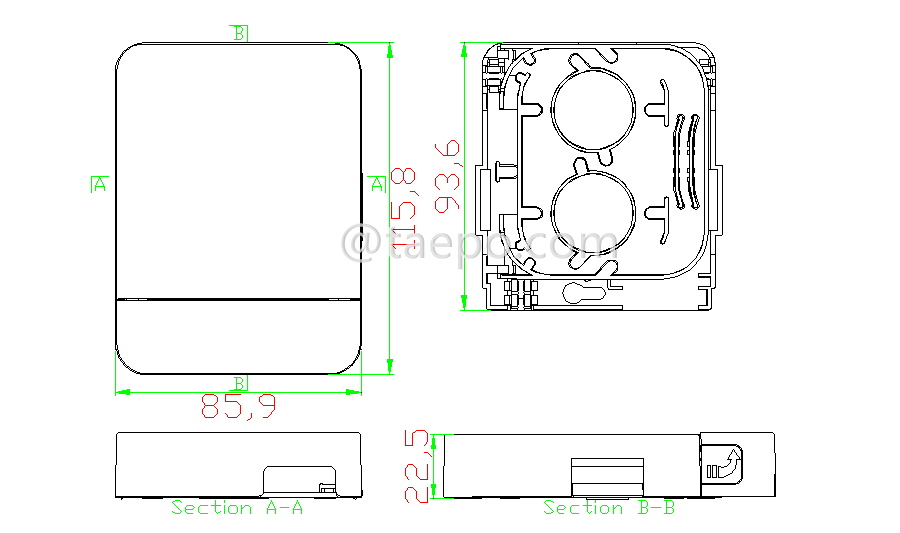
Packing Pictures
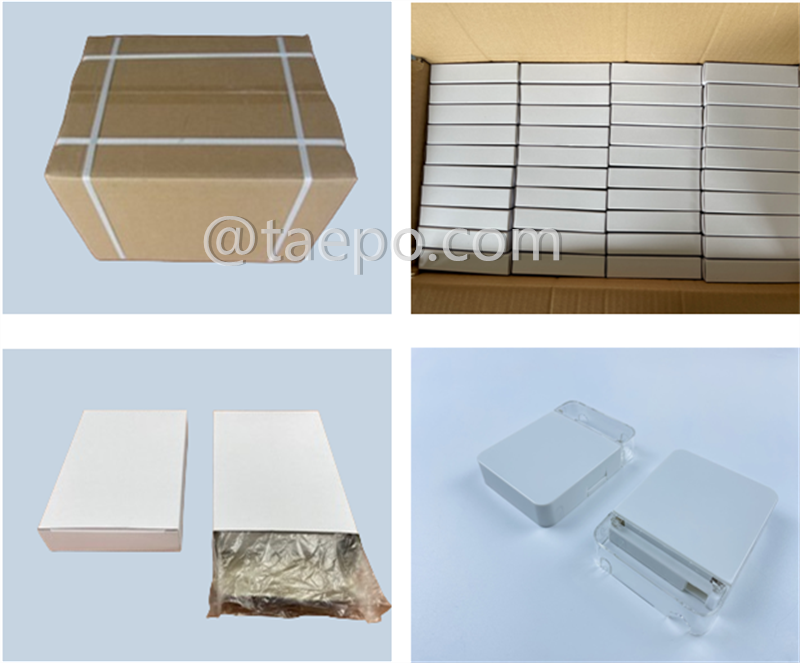
Order Data
| Item No |
Descriptions |
| TP-3323-1 |
Fiber termination box (FTB), indoor, SC, 1 fiber, plastic housing, 115x86x22mm, without adapters, pigtails |

